Editor’s Note: The post is part of a discussion on the EPA’s Clean Power Plan proposal between Philip Wallach, a fellow in Governance Studies at Brookings and the author of the upcoming book, Legality, Legitimacy, and the Responses to the Financial Crisis of 2008 (Brookings Press, 2015), and Bob Sussman, former senior policy counsel to the EPA administrator.
In his August 18 posting, Bob Sussman accepts a few of the points that Alex Abdun-Nabi and I made in our August 5 critique of the EPA’s Clean Power Plan, but still says the totality of our critique is “narrow” and does nothing to call into question the proposed rule’s legitimacy. In this post I explore why Sussman and I see things so differently and try to frame our disagreement in terms of fundamental values. I argue that Sussman’s agency-friendly perspective will ultimately disserve the cause of fighting climate change.
Applying the Clean Air Act to Greenhouse Gases
Sussman and I part ways from the very beginning of the EPA’s application of the Clean Air Act to the problem of climate change. Sussman says it requires “a profound misreading of EPA’s role on climate change” to raise any doubts about the suitability of the Clean Air Act. After all, he says, the Supreme Court pushed EPA toward regulating greenhouse gas emissions under the Act in Massachusetts v. EPA (2007) and affirmed that it expected § 111(d) to be used in American Electric Power v. Connecticut (2011). Given the soundness of that foundation, he explains, it is legally unremarkable and substantively sensible for the EPA to use its discretion to fashion a scheme such as the Clean Power Plan.
Presenting things in this way requires a short historical memory and an unwillingness to think expansively about what would make politically viable and economically efficient (rather than merely legally acceptable) climate policy.
First, the history. It is quite misleading to make it sound as if the Clean Air Act is well-suited to the problems of climate change. During the major overhaul of the Clean Air Act in 1990, Congress debated whether to include measures specifically designed to address greenhouse gas emissions and chose to leave them out (see page 6). In spite of that choice, a closely-divided Supreme Court did order the EPA to directly address the applicability of the Clean Air Act to greenhouse gases in 2007. At the time, environmentalists hailed that decision as a potent spur to sensible legislative action—while readily admitting that the existing law would make a seriously suboptimal tool for regulation, given its orientation toward mitigating localized air pollution problems.
Today the tune has largely changed: apparently, we are all supposed to enthusiastically endorse the Clean Air Act’s ability to stop climate change, congratulate the EPA for the specific choices it made in the Clean Power Plan, and downplay any awkwardness that ensues. Unfortunately, nothing in the statute has changed to make it a more appropriate instrument for regulating greenhouse gas emissions.
The only thing that has changed, in fact, is environmentalists’ political calculus: where in 2007 they imagined robust legislation aimed at slowing and mitigating climate change, after the failure of the Waxman-Markey cap-and-trade bill in 2009 and years of disheartening partisan animosity, they now accept “the certainty of continued Congressional gridlock on climate” as a fact. As a result, Sussman says it has become imperative for the Obama administration to “take full advantage of its authorities under existing law” in order to maintain “international credibility” on climate.
This logic has the potential to become a grimly self-fulfilling prophecy. If climate activists and the EPA hunker down, take what they can get using existing legal tools, and labor to convince themselves and foreign governments that this approach is legally, politically, and substantively viable, they are very likely to end up disappointed—and very possibly foreclose better options. Legally, the path ahead will be a very rocky one for EPA, however clear things seem to the agency’s sympathizers.
The Fairness Issue
Politically, EPA is going to have a very hard time convincing people of the fairness of its chosen approach, which is going to create a political legitimacy problem for it. And if the rule is embroiled in controversy at home, it will be a poor basis on which to base future international negotiating efforts.
Sussman continues to wave off these concerns as if they are without merit. EPA’s four building blocks, he says, “are an inevitable byproduct of the architecture of section 111(d),” and any strategy that failed to rely on them “would be misguided and ineffective.” Given this premise, questioning the fairness of the targets produced by applying the formula and its four blocks does indeed look like baseless whining.
But Sussman’s premise is bluster: even the EPA does not venture anything like this amount of certainty in justifying the proposed rule. Instead, it admits that it considered a wide range of reduction strategies, magnitudes for each specific emission reduction technique, and means of operationalizing expectations. Far from discerning the one true way of applying the Clean Air Act to controlling power sector emissions, the agency has come up with a complicated and highly contestable scheme to produce 49 different state standards.
As Alex Abdun-Nabi and I have explained, these standards vary enormously and are bound to strike many states as grossly unfair. Sussman may think that this complaint is wrong as a normative matter—he thinks the calculations have a few peccadillos, at most. But he has not given sufficient consideration to the matter from a political economy perspective: given that some states are asked to do so much more than their neighbors, it is a near certainty that they will feel they have been treated unjustly. And nothing in the statute itself provides EPA with a compelling defense to this charge, because the particulars of its formula do not emanate from any statutory instruction.
Democratic Decision-Making
That brings us to the heart of our disagreement, which is about the nature of decision-making that will be brought to bear in combating climate change.
From Sussman’s perspective, the EPA has all the political legitimacy it needs to successfully move forward in combating climate change because of the Clean Air Act, Massachusetts v. EPA, and the sensible substance of the Clean Power Plan.
I doubt it. Mobilizing the country—or any country, actually—against climate change in a lasting way is likely to be a very difficult feat (as Australia’s recent carbon tax repeal suggests). This is not the sort of highly technical regulatory matter that can fly under the radar. Rather, it goes to the heart of energy policy for America and is sure to become politically contentious. A policy with this scope and ambition needs to have a broad and solid coalition behind it if it is to survive past its initial roll-out and deliver legal certainty over a course of decades; if its base of support is narrow or partisan, it runs a considerable risk of being scuttled when political winds change, regardless of its intrinsic merits.
Sussman seems to think that the variety in state standards mitigates such worries, but I suspect it actually compounds them. Sussman stresses that, after assigning each state its standard based on its four-block formula, EPA will give states almost total flexibility in determining how they will meet those standards, and the ability to respond to local conditions should help to lighten the regulation’s burden. That’s certainly what EPA says—though it is worth noting that nobody has yet done a careful walk-through of what EPA’s state-by-state approval process would actually look like, and so it’s hard to know just what this vaunted state flexibility will look like in practice. Certainly, the rules and accompanying documents leave lots of questions. In any case, the stringency of the standard will still be the crucial feature, and some states will feel that they are asked to do so much that they effectively have no choice but to implement massive demand-side reduction programs or subsidize greater utilization of gas plants.
If EPA’s renewable targets prove unreachable in some states, as they are likely to, the EPA’s other three building blocks will feel especially constraining. Sussman thinks it could not possibly be thought unfair to hold states to their own past promises, as Block Three proposes to do with reference to states’ renewable portfolio standards, but he continues to ignore all concerns about states’ democratic sovereignty. Future state legislators will be loath to abide by their predecessors’ choices simply because EPA has enshrined them in federal regulations. (Sussman’s suggestion that states might change what the EPA expects of them in terms of renewables between now and the finalization of the rule is almost certainly wrong, since the EPA is using goals as they were in 2012, but in any case it would miss the point. The question is why a state’s own choices should become practically irreversible, or in any case quite costly to renege on, in the future, just because of EPA’s say-so.)
All the specifics aside, it is a near certainty that many state politicians over the next 15 years will find it politically advantageous to position themselves as standing up against the EPA; some of them will persuade their states to reject compliance with the rule. (Twelve states are already suing the EPA over the rule’s basics, and state-by-state arbitrary and capricious challenges would be sure to follow down the road.) At that point EPA will find itself needing to enforce its standards, but it may find that it is lacking in statutory and constitutional authority to carry out any of its blocks other than Block One (coal plant efficiency), which would make it very difficult to deliver on its promised reductions.
The Big Picture
None of my criticisms are meant to belittle the EPA’s good faith efforts to fashion a sensible regulatory scheme from the statutory tools at its disposal. In a sense, the agency is just playing the hand it has been dealt; intemperate attacks on it as “power-hungry” are largely unfair.
But when we think about how to address the problem of climate change over the coming decades, the question can’t be whether we sympathize with the plight of hard-working agency staff, or whether we can offer an internally consistent rationale for its rulemaking. With all due respect, that is far too low a bar. The Clean Power Plan undoubtedly represents thousands of hours of hard work, and it is genuinely interested in delivering cost-efficient carbon reductions. But that doesn’t mean we should conclude it represents an adequate platform for our nation’s climate policy—legally, politically, or economically. Unfortunately, the second-best that agency action can provide without further legislation is not likely to be good enough, and those who care about the future of climate change policy will be quite badly disserved if they insist on ignoring its deficiencies.
Instead, the actuality of agency action should continue to be a spur to bigger, wider, and smarter thinking about climate policy in America. The best solutions would involve replacing EPA-centered regulation with better-suited tools, including a carbon tax, innovation promotion, and genuinely international action that would seek to reduce global emissions rather than just domestic ones (e.g., by seeking to help China lessen its dependency on coal). Environmentalists often seem to have a deep faith that if only America can do something on the domestic front, a virtuous spiral will dramatically reshape international negotiations, but it is all too easy to imagine them being disappointed.
Given the reigning animosity in Congress, many may agree with Sussman that criticizing the Clean Power Plan for its shortcomings makes the perfect the enemy of the good. Really, though, it is about honestly assessing the big picture, and not fooling ourselves into thinking we are closer to a wise and effective long-run climate change policy than we really are.
Editor’s Note: The post is part of a discussion on the EPA’s Clean Power Plan proposal between Philip Wallach, a fellow in Governance Studies at Brookings and the author of the upcoming book, Legality, Legitimacy, and the Responses to the Financial Crisis of 2008 (Brookings Press, 2015), and Bob Sussman, former senior policy counsel to the EPA administrator.
The Brookings Institution is committed to quality, independence, and impact.
We are supported by a diverse array of funders. In line with our values and policies, each Brookings publication represents the sole views of its author(s).

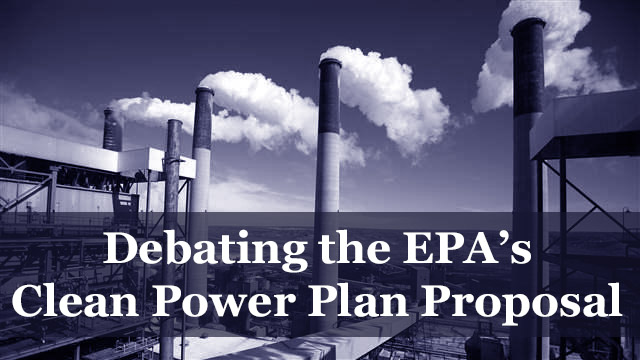
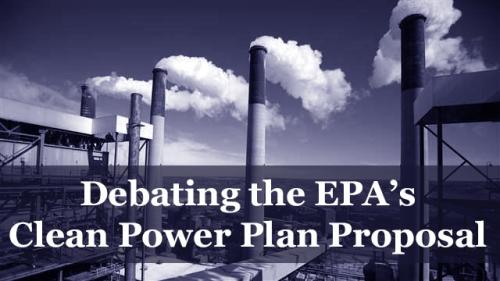
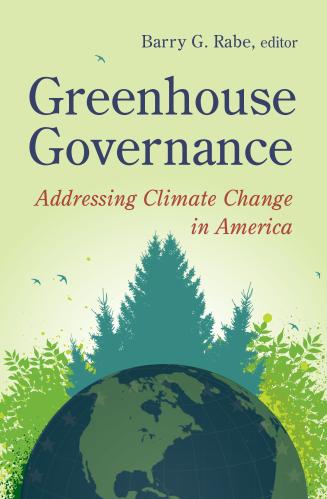
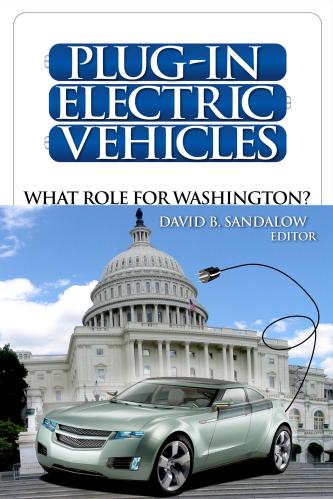
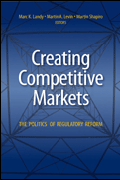




Commentary
Debating the EPA’s Clean Power Plan Proposal — The Big Picture for the EPA’s Clean Power Plan
August 27, 2014